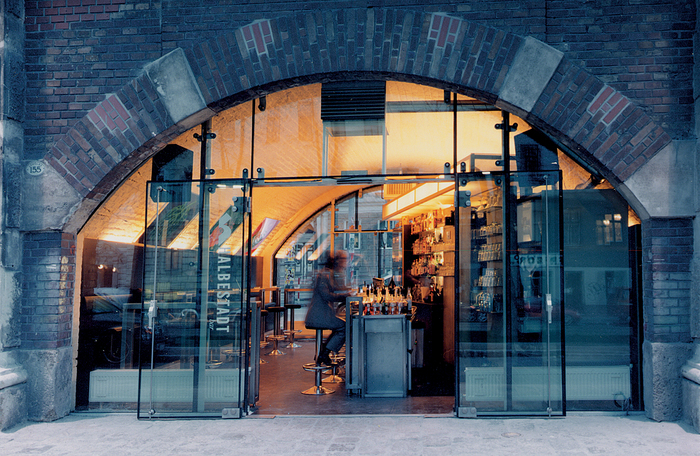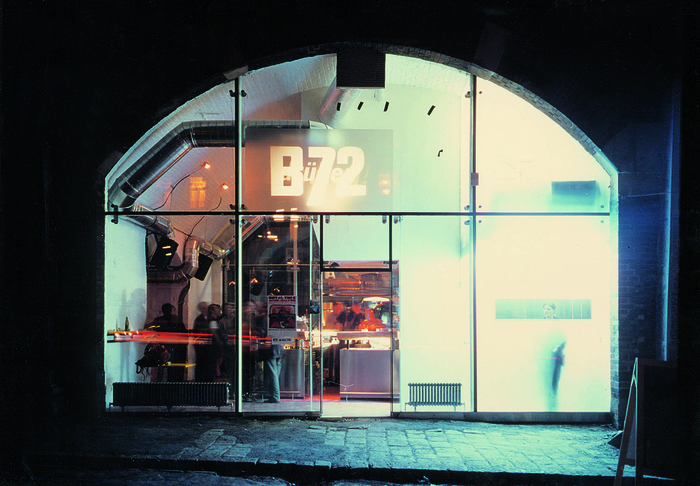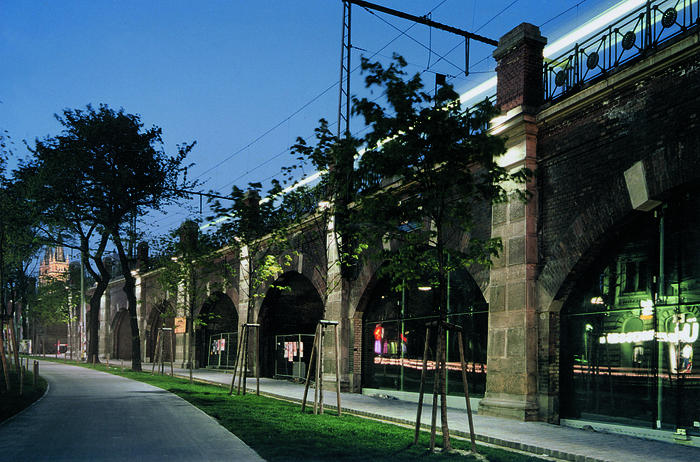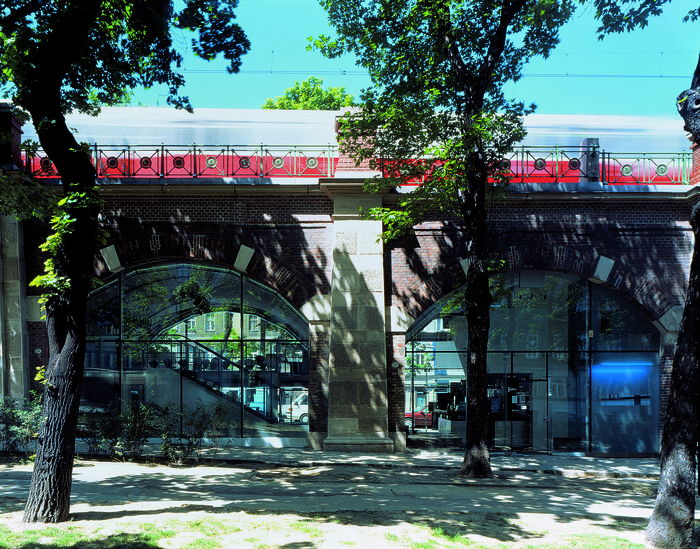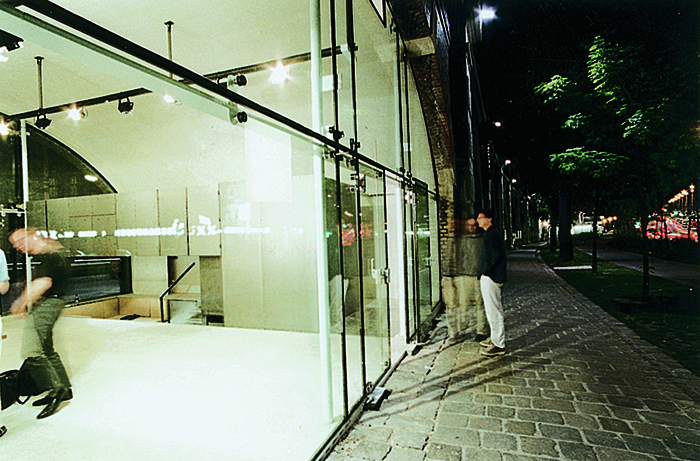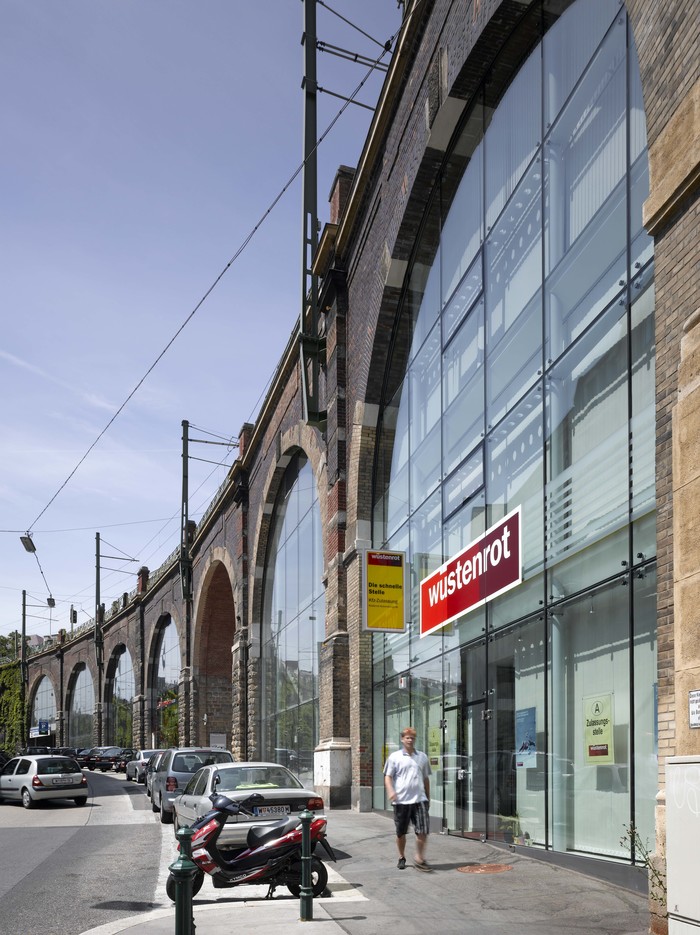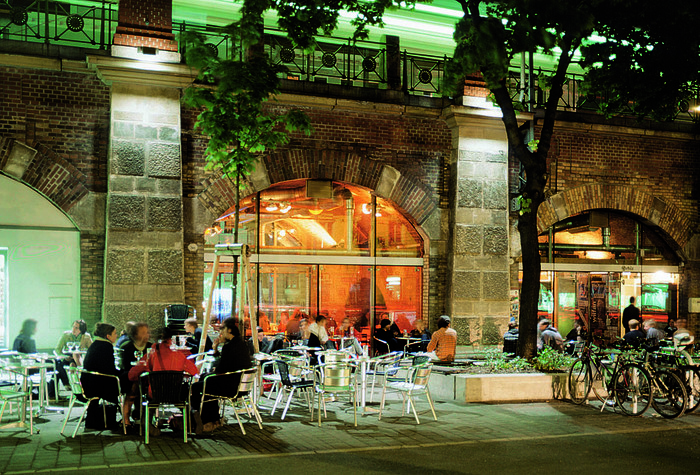Revitalization Stadtbahn Arches
When the construction of the Stadtbahn viaduct was completed in the early 20th century, the arches below the elevated train line were left open. It was only in the course of time, when the city grew to reach and engulf the Gürtel, that they were closed off and leased to entrepreneurs. Only a few of the original façades have been preserved intact. In the past decades, many arches were bricked over or disfigured with billboards, thereby concealing the original Stadtbahn viaduct structure. The use of solid, opaque materials destroyed the former transparency of the historical timber/glass portals and intensified the barrier effect between inner and outer districts. The new design approach is to trigger a positive urbanistic change while promoting the degree of visibility and social control of the adjoining pedestrian paths, thus increasing both the use of the area and the feeling of safety experienced by locals and visitors.
The desired level of transparency is achieved by means of a reduced steel structure and a uniform, spot-fixed glazing system. The structural elements – two supports and one horizontal beam – reflect the design principles of the original façade: in keeping with Otto Wagner’s tripartite concept, the supports are situated below the crown brick of each arch while the horizontal beam runs below the intersection of arch curve and straight line.
A modular system was developed for doors, window vents and signboards. Tenants may select and combine individual elements of the system according to their specific needs.
To give a practical demonstration of the concept, Wiener Linien GmbH & Co KG executed arch 168 as a model specimen in 1998. 50 arches were implemented by now.
- Address:
- Wien, Austria
- Architecture:
- Architekten Tillner & Willinger, Wien
- Cooperation Architecture:
- B. Abel, M. Ritter
- Client:
- Wiener Linien, Wien, MA 19 - Architektur und Stadtgestaltung, Wien, MA 21A - Geschäftsgruppe Stadtentwicklung und Verkehr, Wien, Stadt Wien, Wien
- Landscape Architecture:
- Cordula Loidl-Reisch, Wien
- Traffic Planning:
- Rosinak & Partner ZT GmbH, Wien
- End of Construction:
- 2000
